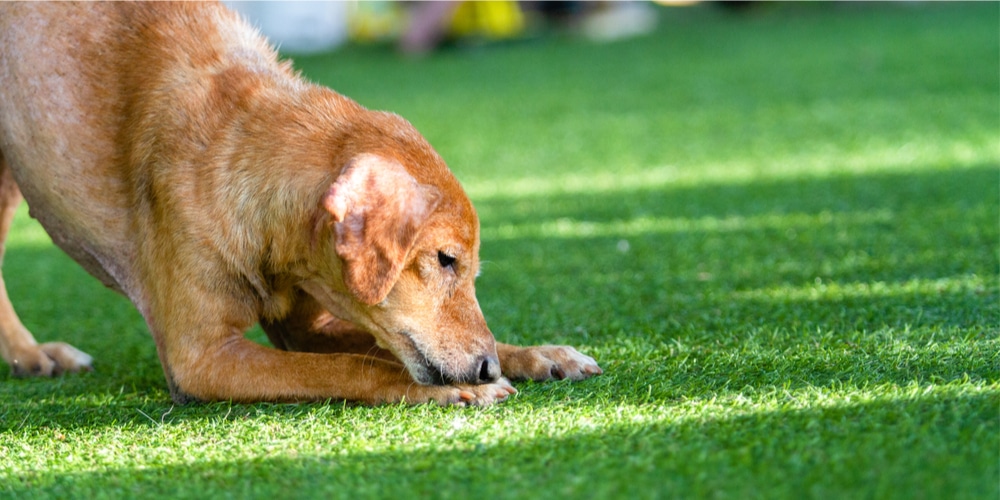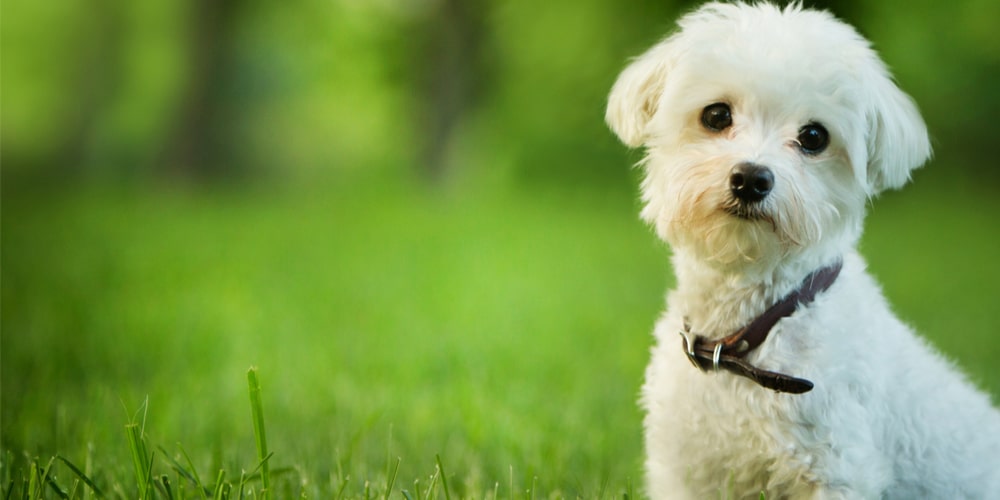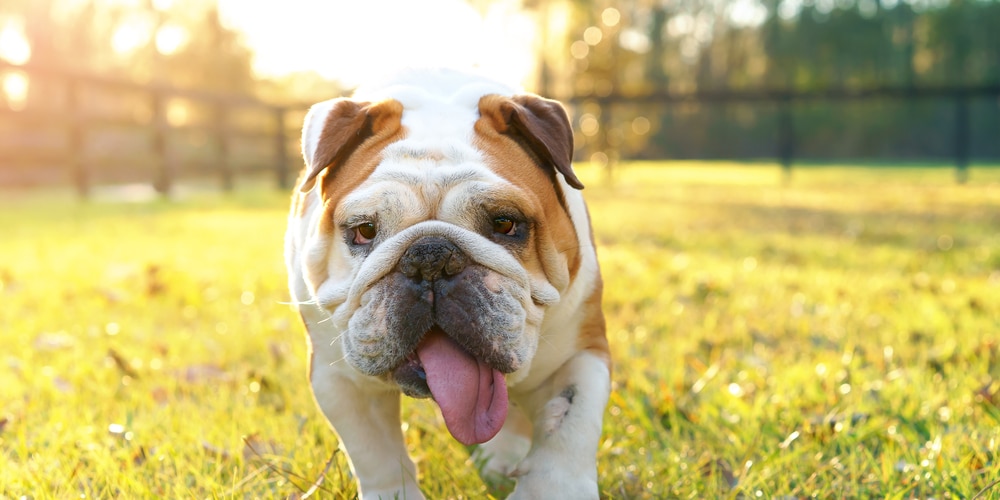When selecting grass seed for your lawn, it’s critical to consider the safety and well-being of your furry friends.
Explore options that contribute to a pet-friendly outdoor environment.
Types of Pet-Friendly Grass Seeds
Some grass seeds are known for their compatibility with pets:
- Perennial Ryegrass: Offers urine-resistance, which is beneficial in maintaining lawn aesthetics. Find out more about Perennial Ryegrass.
- Fescue Grasses: These are wear-tolerant and recover quickly from pet-related damage.
- Bermuda Grass: A good choice for warm climates due to its heat tolerance and quick recovery. Learn about Bermuda Grass.
Evaluating Grass Seed Safety for Dogs
When you’re assessing the safety of grass seeds, consider the following:
- Chemical Additives: Avoid seeds pre-coated with synthetic fertilizers and opt for natural or organic seeds to ensure your pet’s health.
- Soil Preparation: Tilling the soil and sowing seeds properly can prevent ingestion or entanglement in pets’ fur. Grass seed safety tips.
- Growth Conditions: Choose grass suitable for your local climate and your dog’s activity level, to maintain a lawn that’s both safe and resilient.
How to Plant Pet-Friendly Grass Seeds
Creating a lawn that is safe and enjoyable for your dog involves careful soil preparation, appropriate seeding techniques, and diligent watering and fertilization practices.
Let’s dive into the essentials for establishing a thriving, pet-friendly grassy area.
Soil Preparation and Testing
- Test the Soil pH: Aim to maintain a soil pH between 6.0 and 7.0. This range is optimal for most pet-friendly grass seeds.
- Test kits: You can purchase a soil testing kit from a garden supply store to assess your soil’s current condition.
- Modify Soil if Necessary: If the pH is not within the desired range, use lime to decrease acidity or sulfur to increase acidity.
- Prepare the Soil: Till the soil about 2-3 inches deep to create a welcoming bed for seeds. Remove debris, roots, and large clods to achieve a fine, friable soil texture, enhancing seed-to-soil contact.
Seeding Techniques
- Choose the Right Seed: Select a dog urine-resistant grass like Perennial Ryegrass or a durable variety such as Kentucky Bluegrass, depending on your climate.
- Sow Evenly: Distribute the seeds evenly throughout the area, using a broadcaster or spreader to ensure consistent coverage.
- Work Seeds into Soil: Lightly rake the soil to cover seeds to the recommended depth of 1/8 to 1/4 inch, as it is crucial not to bury them too deeply.
Watering and Fertilization Practices
- Watering Schedule: Maintain a consistent watering schedule to keep the soil moist but not saturated during the germination period.
- Seedlings’ needs: Seedlings require water daily, and the soil should be kept evenly damp.
- Fertilizer Choice: Opt for pet-safe fertilizers.
- Organic options: If fertilization is needed, select an organic or natural fertilizer free from harmful chemicals. Follow the specific instructions for application rates and frequency.
- Regular Maintenance: After the initial establishment, reduce the frequency of watering but ensure that the lawn receives enough hydration, especially during dry spells. Continue to use pet-safe fertilizers as part of regular maintenance.
Maintenance of Pet-Friendly Lawns
Maintaining a pet-friendly lawn involves regular care, managing pet waste effectively, and avoiding harmful chemicals. These steps ensure a safe and green space for both you and your furry friends.
Regular Lawn Care Tips
- Mow Regularly: Keep your grass cut to an appropriate height specific to the grass species. This encourages strong root growth and reduces lawn stress.
- Water Wisely: Water your lawn deeply but infrequently to promote deep root systems. Early morning is the best time to water to reduce evaporation and fungal growth.
- Aerate the Soil: Aeration helps alleviate soil compaction. This allows roots to breathe and absorb nutrients more effectively.
- Overseed: Apply dog-friendly grass seed periodically to keep your lawn dense and prevent weeds.
Pet Waste Management
- Prompt Cleanup: Remove pet waste promptly to prevent lawn damage and protect against harmful bacteria.
- Compost Wisely: If you choose to compost, do so in a designated pet waste composter to avoid contaminating your regular compost.
Avoiding Chemicals and Pesticides
- Go Organic: Choose pet-safe fertilizers that provide necessary nutrients without harmful chemicals.
- Natural Pest Control: Utilize natural methods like beneficial nematodes or diatomaceous earth for pest control rather than synthetic pesticides.
Common Issues and Solutions
When cultivating a lawn that is both beautiful and safe for your dogs, you may encounter a few common hurdles. Here’s how to tackle issues like bare spots, urine damage, and weeds with dog-friendly tactics.
Dealing with Bare Spots
Bare spots can be an eyesore in your lush lawn and a sign of underlying problems that need addressing. To effectively deal with these, consider:
- Identifying the cause: is it high traffic, digging, or something else?
- Choosing a hardy grass variety, such as Perennial Ryegrass, that can withstand wear and tear.
Preventing Urine Damage
Dog urine can cause unsightly yellow spots in your grass, but there are ways to prevent this damage:
- Train your dog to use a specific area of the yard that’s less visible or on a more resistant surface.
- Use urine-resistant grass seeds like Perennial Ryegrass to help minimize the effects of nitrogen in dog urine on your lawn.
Managing Weeds Naturally
Chemical herbicides might not be the safest option for your pet. To control weeds naturally:
- Practice regular lawn maintenance like mowing and aeration to prevent weed establishment.
- Consider natural herbicides, such as vinegar or corn gluten meal, which are less likely to harm your pets.
Selecting the Right Seed for Your Climate
When choosing the pet-friendly grass seeds for your yard, it’s essential to select a seed that thrives in your local climate. This will determine how well the grass grows and its ability to stand up to the wear and tear of your furry friends.
Climate-Specific Recommendations
- Warm Seasons: If you live in a region with hot summers and mild winters, consider grasses like Bermudagrass or Zoysiagrass, which are both durable and handle heat well.
- Cool Seasons: For cooler climates with potential frost, Fescue or Kentucky Bluegrass stand up to chilly temperatures and recover from pet activity robustly.
Drought-Resistant Varieties
- For Dry Areas:
- Buffalograss: This grass is native to the prairie regions and is highly drought-resistant.
- Bahia: It’s a low-maintenance option that can tolerate long periods without water.
Cold-Tolerant Grasses
- Harsh Winters:
- Fine Fescues: These are great for shaded and cold areas and they don’t need much maintenance.
- Perennial Ryegrass: It’s known to be quick germinating and can be mixed with other seeds for a hardy lawn even in cooler climates, as referenced in this guide on pet-friendly grass seed.
Frequently Asked Questions
Choosing the right grass seed for your furry friend’s playground is as crucial as selecting their diet. Let’s dig into the specifics to ensure your lawn remains a lush, safe haven for your dog.
What type of grass withstands high traffic from dogs?
Grasses like Tall Fescue and Perennial Ryegrass are renowned for their resilience against constant paw traffic. These varieties have deep root systems that help them recover quickly from wear and tear.
Which grass varieties offer the best resistance to dog urine?
Dog urine can be tough on grass due to its high nitrogen content.
Varieties such as Ryegrass and Fescue are known to resist the damaging effects of dog urine better than others, retaining their green vibrance.
How do you properly seed a lawn that is frequently used by dogs?
When seeding your lawn:
- Prepare the soil by removing debris and aerating it.
- Select a high-traffic tolerant seed mix.
- Sow the seeds evenly and cover lightly with soil.
- Water regularly to maintain moisture during germination.
Which grass species are safe and non-toxic for dogs to ingest?
Grasses such as Kentucky Bluegrass and Tall Fescue are safe and non-toxic for dogs.
Always ensure the seed blends are free from harmful chemicals or pesticides.
What are the best grass options for dogs with sensitivity or allergies?
Grass options that are hypoallergenic and gentle for dogs with sensitivities include:
- Fine Fescue, known for its low pollen.
- Buffalo grass, which is naturally weed-resistant, thereby reducing the need for chemicals.
Which grass seeds are known for being especially durable with pets?
Seeds specifically designed for pet durability often include a mix of tough species such as:
- Perennial Ryegrass
- Kentucky Bluegrass
These seeds offer a blend that can withstand the extra wear from pets while still providing a soft surface for them to enjoy.
Last update on 2025-06-06 / Affiliate links / Images from Amazon Product Advertising API





